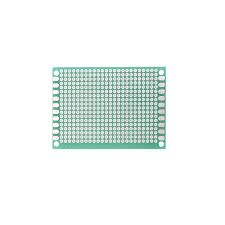The PCB DFM (Design for Manufacturability) very much improves the designing to manufacturing process by implementing fast and effective processes which minimizes mistakes, delays and cost. By embedding DFM earlier in the product design phase, individual development groups can tightly align with respective manufacturing capabilities and prevent production bottlenecks common at later stages. Up to a 20% time reduction from design to production is achievable with the right tools – resulting in decreased development costs, faster time-to-market and lower number of prototypes when DFM would be integrated into PCB design.
Essentially, DFM focuses on manufacturable design parameters such as trace width, spacing, placement of components that comply with fabrication rules. Following these specifications means designers are less likely to introduce a design mistake during production, which could lead to rework, costs and schedule slippage. For example, an exhaustive DFM process that incorporates defined spacing rules will reduce failure rates for electrical shorts by 15%, according to industry statistics. With engineers having manufacturing requirements in mind early on, it creates the ability to fine-tune factors to reduce costly adjustments.
Design for manufacturing (DFM) is also useful in component selection and placement. In the process of designing DFM, designers select components that are functionally compatible but also more available and dependable. By using commonly available parts, there are no sudden production stops due to part shortages or obsolescence that can burden the project with unplanned expenses. Estimates range from a 10-15% increase in manufacturing costs due to sourcing delays. DFM helps designers skirt around such problems by harmonizing their designs with stocks on hand as well as part supply in the future.

A well-developed tooling to aid thermal management inside of DFM translates into an easy design to manufacturing. When high-power components are more diffusely mounted, DFM eliminates the chances of their overheating which inturns aids to enhance reliability and longevity of PCB through strategic placement. Thermal PCB design problems are more commonly only making worse the lifespan of a PCB as thermal impacts can shorten it by 30% or beyond in high-performance applications. This results to long lasting, high quality PCBs without eating additional cooling resources by conducive spacing and design layout which retains an effective heat dissipation.
DFM also deals with the complexity of assembly, which means that the PCB design is easy to assemble and it does not require complex tooling or specialized equipment. When manufactured, they can be assembled faster; therefore, designers design for normal assembly techniques and methods. For instance, specifying loose tolerances on drill sizes and trace widths allows manufacturers to utilize their typical fabrication equipment while avoiding the lead time specialty tooling can incur. According to industry surveys, there is an average reduction of 10% in assembly time due to DFM-compliant designs which can be quite critical for tight production schedules.
Tools like an online Gerber viewer can aid in DFM by allowing designers to view their designs and confirm its manufacturability. Gerber viewers help design teams identify problems before production, but rather than checking designs against a CAD model in DFM verification (this typically occurs before Gerbers are created), they read the layout. This verification step strengthens the design-to-manufacturing workflow by blocking common mistakes from entering into production.
pcb dfm helps manufacturers align designs with manufacturing capabilities, optimizing component placement, enhancing thermal management, and simplifying assembly. The end-game is a more streamlined process, less error-prone and accelerated towards production, enabling businesses to deliver products into the market faster and at lower cost.